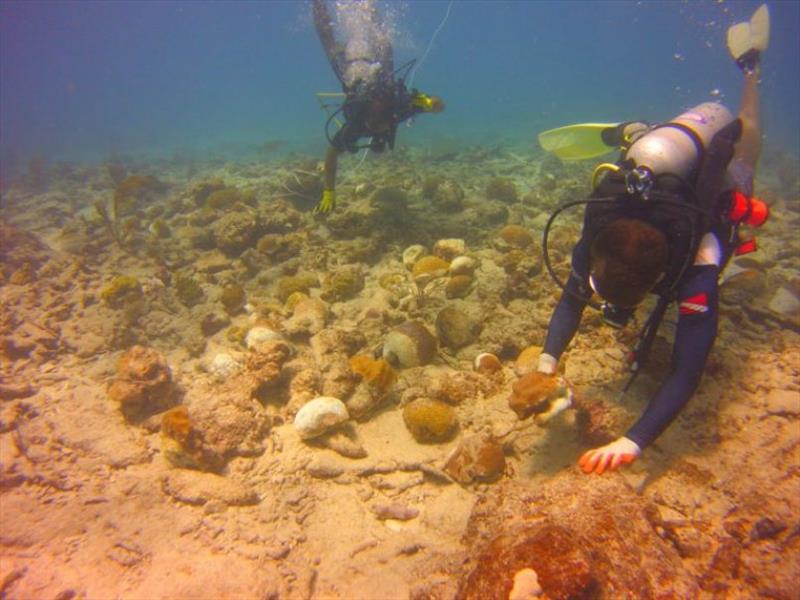
NOAA supports recovery in Puerto Rico, USVI
by Alyson Finn 15 Mar 2019 11:26 UTC

Divers reattaching © NOAA Fisheries
In December, NOAA received its second FEMA Recovery Support Mission Assignment to enable "U.S. Virgin Islands (USVI) Coral Reef Emergency Response and Restoration for Sustainable Ocean Economies, Food Security, and Storm Surge Mitigation."
In the aftermath of major storm events such as the 2017 hurricane season, NOAA often holds a seat at the table during mission assignments for federal natural resource recovery. Reef systems in these territories are vital to the ecosystem, mitigating damages to coastlines from waves and storm surge.
In 2017, hurricanes Irma and Maria reached Category 5 strength, causing significant damage to the coral reefs in Puerto Rico and the Virgin Islands. Initial damage assessments revealed that large coral heads and Endangered Species Act-listed species were overturned, broken, or buried by sediments.
Corals are important economic engines for tourism in the region. Almost a quarter of all ocean species — such as red snapper, lobster, and octopus — depend on coral reefs for food and shelter. With hundreds of thousands of coral snapped from reefs and around the islands, the damage from storms of this strength can be detrimental to both the health of the ecosystem and the prosperity of these tourism-driven economies.
To speed the recovery of this resource, this latest mission assignment in the Virgin Islands will focus on propagating corals in nurseries and then transplanting them to impacted reef sites. While recovery efforts in Puerto Rico, which started over a year ago, focused on assessment and triage. To date, over 10,000 broken coral heads have be reattached.
The work in Puerto Rico and the Virgin Islands is urgently needed and rapid implementation of coral reef emergency response and restoration will reduce costs and maximize the benefit of FEMA dollars spent on restoration and recovery of these territories and their coastal communities. However, this work is not completed overnight, it takes months, even years, of planning, data collection, communication, and teamwork.
In Puerto Rico on deployment, Coral Reef Specialist Eileen Alicea and Coastal Resources Coordinator Rosa González spent most of their time working out of a FEMA Joint Recovery Office providing scientific support on applications and projects for FEMA Public Assistance and Hazard Mitigation funds. The island-wide damages in Puerto Rico were unprecedented, presenting unique communication and reporting challenges. Daily briefings and coordination calls were held with stakeholders, state government agencies, local representatives, and partners — putting NOAA squarely at the table in federal natural resource recovery.
To build on this success, staff in the Pacific are scoping a potential assignment for coral reef damage associated with Super Typhoon Yutu and impacts in Saipan. This mission assignment is still under consideration, but given these successes from the 2017 storm season, it is likely that the 2018 recovery efforts for coral resources will be approved.